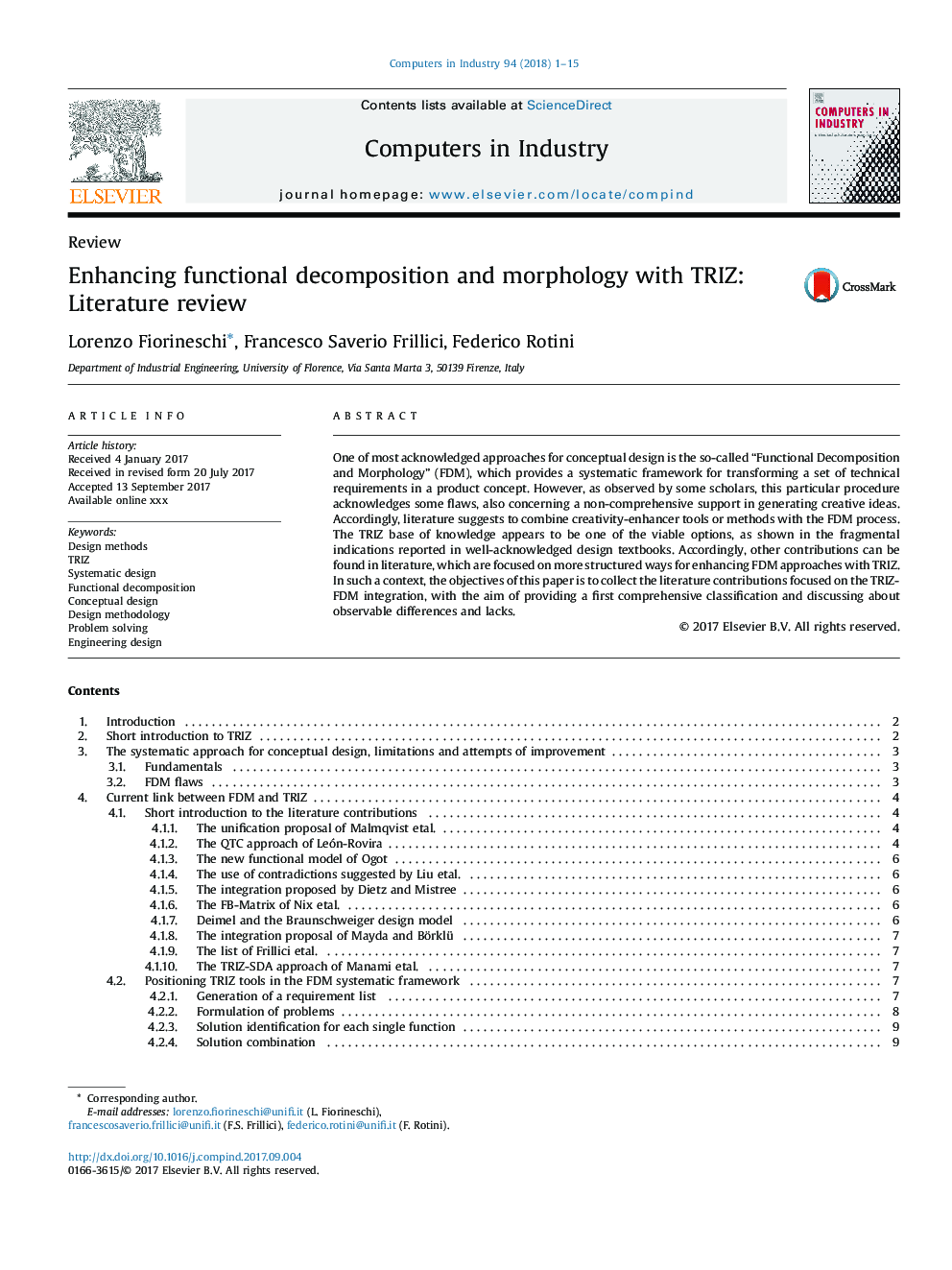| Article ID | Journal | Published Year | Pages | File Type |
|---|---|---|---|---|
| 4965482 | Computers in Industry | 2018 | 15 Pages |
Abstract
One of most acknowledged approaches for conceptual design is the so-called “Functional Decomposition and Morphology” (FDM), which provides a systematic framework for transforming a set of technical requirements in a product concept. However, as observed by some scholars, this particular procedure acknowledges some flaws, also concerning a non-comprehensive support in generating creative ideas. Accordingly, literature suggests to combine creativity-enhancer tools or methods with the FDM process. The TRIZ base of knowledge appears to be one of the viable options, as shown in the fragmental indications reported in well-acknowledged design textbooks. Accordingly, other contributions can be found in literature, which are focused on more structured ways for enhancing FDM approaches with TRIZ. In such a context, the objectives of this paper is to collect the literature contributions focused on the TRIZ-FDM integration, with the aim of providing a first comprehensive classification and discussing about observable differences and lacks.
Keywords
Related Topics
Physical Sciences and Engineering
Computer Science
Computer Science Applications
Authors
Lorenzo Fiorineschi, Francesco Saverio Frillici, Federico Rotini,
